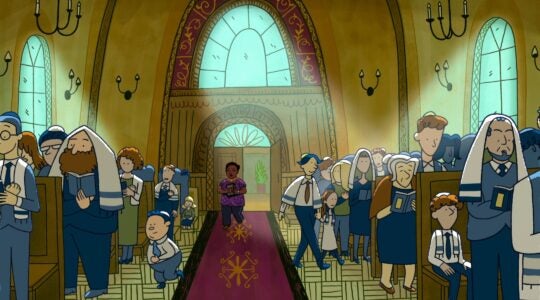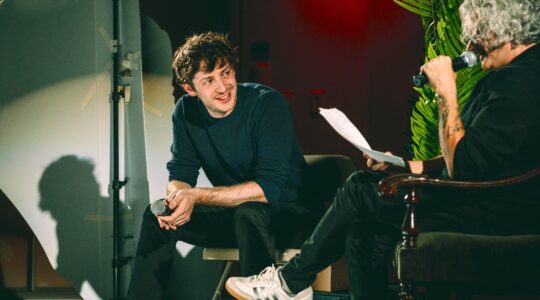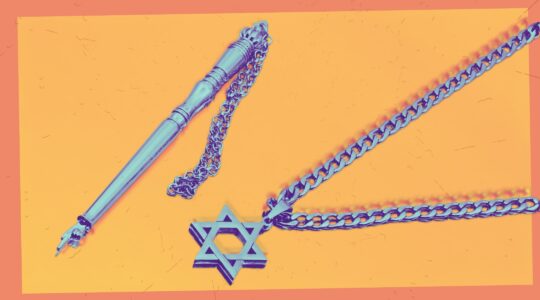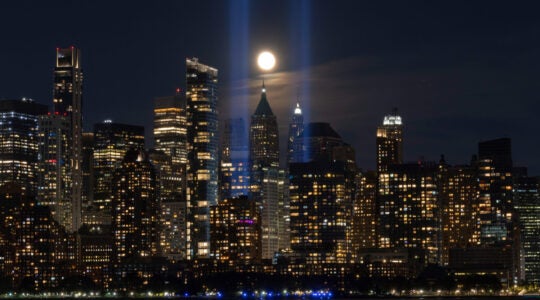I was raised in the chasidic boys education system in New York City. It equipped me to be a good Jew and Talmudic scholar. It did little, however, to educate me to live in the modern world. Not until I mustered the courage to transition to a Modern Orthodox Jewish high school did I begin to receive anything resembling a proper secular education.
The chasidic school that I attended as a child began each day with Shachris (morning prayers) followed by classes in Torah, Talmud, and other religious texts until 4 p.m. It was only after this exhausting day of Judaic studies, taught in Yiddish, that we were then given 90 minutes of secular studies four days a week, also conducted in Yiddish. We were only introduced to the ABCs in the third grade and our classes continued with rudimentary English and arithmetic until the eighth grade. The most advanced math I was ever taught was division. I was never taught any science, history, geography, government, health, literature, computers, or art. After eighth grade, secular studies ended entirely, despite a 13-hour school day.
Many of the teachers received the same poor secular education given to us and so they barely knew the subjects they were supposed to teach. (This situation has somewhat improved in more recent times thanks to the Title One program.) My uncle was one such teacher. His preparation for teaching a class in multiplication consisted of his being tutored by my aunt the night before.
The school I attended is not in any way an isolated case. It is the universal norm among chasidic boys schools in New York.
It was 15 when I realized I wanted to learn about the world around me. I would have wanted to continue my Judaic studies within a chasidic framework but was not able to find even a single chasidic boys school that taught any secular studies past eighth grade. With no alternative, I enrolled in a Modern Orthodox Jewish high school despite knowing that I would lose my childhood friends and become a black sheep within my insular chasidic community.
The transition wasn’t easy. I struggled mightily to become fluent in English, catch up in math, and begin to learn things that I knew nothing about—social studies, science and other subjects mandated by law but that, in defiance of the law, I was never taught in my chasidic yeshiva. Despite having lived in New York City my entire life, it was the first time I was surrounded by people communicating in English—an intimidating experience for someone who began with such a limited grasp of the language.
In my new school I was still able to pursue the Judaic studies that I loved so much, but math, science and history were taught with equal enthusiasm and rigor. I am proud to report that by the end of that first year I was able to ace the New York State Regents examinations in math, science and history. I will take some of the credit for having worked hard at it, but much credit goes to the excellent teachers in my Modern Orthodox school.
The vast majority of my friends in chasidic yeshiva, on the other hand, still have never even heard the words algebra, atom, or biology. Whereas a large portion of the students in the Modern Orthodox yeshiva pursue higher education, I have heard of no graduates from my chasidic school who have enrolled in college. In fact, the vast majority of chasidic yeshiva graduates do not even obtain a high school diploma.
Student advocates, including the organization YAFFED (Young Advocates For Fair Education) and others, have been working tirelessly over the past number of years to bring this problem to the attention of the wider society and to force the city and state educational establishments to do something about it. All private schools—yeshivas included—are required by law to meet minimum secular educational requirements.
The chasidic educational establishment is fighting back by characterizing those who criticize them as attacking the yeshiva system as a whole. That’s not true. Non-chasidic yeshivas turn out many top students who attend the best universities and contribute so much to the larger society. What we are seeing here is chasidic rabbis pretending to not know the difference between chasidic and non-chasidic yeshivas in an attempt to hide their schools within the larger milieu of the yeshiva system as a whole. This is nothing short of dishonest, and would be laughable if it wasn’t so serious.
Thus, for example, Rabbi Avi Greenstein has written in the Gotham Gazette that “[t]here are more than 275 yeshivas in this city and they are as different from one another as they are similar… [Critics] must refrain from defining a multi-faceted system of 275 schools and 100,000 students by what they perceive to be the weakest few schools and students.”
In a way, Rabbi Greenstein is right. All yeshivas are similar in their devotion to Torah and Jewish values. And it is also no doubt true that the quality of secular education differs among Jewish schools. But the fact is that the secular education provided by nearly all chasidic boys schools is shockingly minimal and—after eighth grade—non-existent. These are the yeshiva system’s “weakest” schools, to use Rabbi Greenstein’s term. And they are hardly few in number.
In short, many yeshivas follow the law and are devoted to providing their students with a modern education and skills for a modern world. Chasidic boys yeshivas are affirmatively committed to the exact opposite. Don’t let them tell you anything different.
Chaim (Jay) Fishman is a freshman at the University of Pennsylvania and a New York Times Scholar. He grew up in Williamsburg and attended Hasidic yeshiva until age fifteen. He is a member of the advisory council for YAFFED.
The New York Jewish Week brings you the stories behind the headlines, keeping you connected to Jewish life in New York. Help sustain the reporting you trust by donating today.




